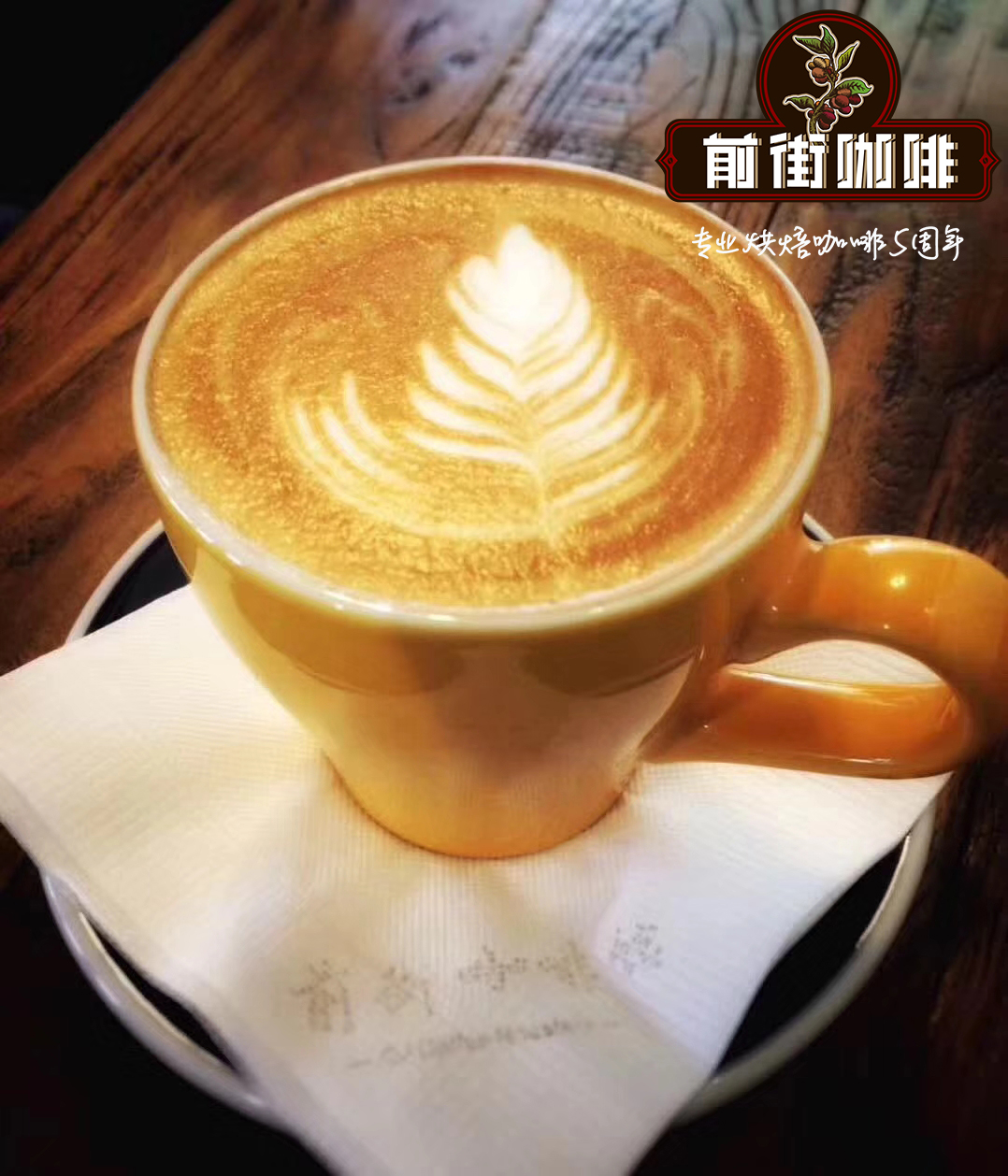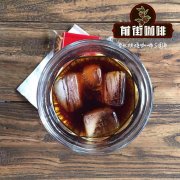Latte is not coffee? Is the matcha latte coffee? What the heck are these common drinks?

Professional coffee knowledge exchange more coffee bean information please follow the coffee workshop (Wechat official account cafe_style)
Latte coffee the meaning of latte coffee the difference between latte and mocha
Street cafes are opened one by one, and there is always a steady stream of people in the cafe. Commuters during office hours also have a cup of coffee, and some operators have even launched vending machines for making coffee. Drinking coffee seems to be a trend! Have you joined the coffee craze?
Ordering coffee is not an easy task for people who drink less coffee. The dazzling variety of items on Menu makes people dizzy. What's the difference between them? Now let's take a look at how to distinguish the common types of coffee in the coffee shop, so that we don't have to ask the clerk to order food one by one.
Get to know him first! Basic black coffee
Black coffee (Black Coffee) generally refers to all pure coffee extracted without adding any seasoning, and some people call it "black coffee". Different countries have different definitions of black coffee, such as a small cup of Espresso in Italy and a large cup of Americano in the United States, both of which are well known in Taiwan.
Espresso Espresso
Espresso is an Italian word, meaning "fast", so it has the concept of a bit of a bubble. Espresso is a concentrated drink made from coffee pressed powder with high-pressure hot water. It has a strong and strong taste. Most of the seasoned coffee on the market is diluted and seasoned with Espresso.
Espresso has certain extraction standards, ranging from water temperature, powder quantity, temperature, capacity and even water pressure. The drinks brewed are small and delicate, usually only 1 to 2 ounces (about 30--60ml), so if you order Espresso for the first time, don't be intimidated by its small capacity, it's not a test cup!
An Espresso is only about 30ml, which is quite a small cup.
There are many changes in Espresso alone. Here are some common nouns:
Doppio: two Espresso (Double Shot,60ml).
Ristretto: because it shortens the extraction time and reduces the contact between steam and powder, the coffee tastes less bitter and contains less caffeine.
Lungo: by adjusting the grinder to prolong the extraction time, the extracted coffee tastes lighter than Espresso, but it will be slightly bitter.
American Coffee Americano
Convenience stores also sell American coffee, which is diluted by adding hot water to espresso. American coffee originated during World War II, when the US military who came to Italy was not used to Espresso, so they added a lot of hot water to dilute the taste, and then this way of drinking was called "American coffee". However, some Europeans do not agree with this practice, and the French even call American coffee "jus de chaussette", which means sock juice.
Although the aroma of American coffee is not as good as that of Espresso, it is more acceptable to ordinary people because of its mild bitter taste. American coffee is also more popular in Taiwan.
Adding hot water to the Espresso is hot American, and there is also iced American coffee with ice.
Other common coffee drinks
Several common coffee drinks on the market, such as lattes, cappuccinos and mochas, are all derived from Italian concentrations. the biggest difference is the ratio of coffee to milk, as well as the extra seasoning.
The extracted Espresso is the base of many flavored coffee.
Latte Caff è Latte
In China, coffee lattes are often referred to as "Latte" for short, but the word Latte actually means milk in Italian, while Caff è latte is coffee with hot milk (Steamed Milk). So if you order Latte in Italy, you will only get a glass of milk.
When making lattes, the proportion of steamed milk (Steamed Milk) is higher than that of espresso, and there are thin milk bubbles on the top. Because a large amount of strong milk is added, the bitterness and sour taste of the coffee are much reduced, making the coffee latte a popular drink.
Coffee Ole ≠ latte
The French words lait and Latte agree that they both refer to milk. In French, "Cafe au lait" means coffee with milk, which is also translated as "coffee Ole" or "Ole coffee" in China. Although there is no specific proportion, coffee O'Lei and Caff è latte are the same, with more milk than coffee; the biggest difference is that the base of Italian latte is Italian extracted Espresso, while the base of coffee O'Lei is brewed in a French filter pot (French Press).
Of course, the practice of latte coffee varies slightly from country to country. For example, coffee O'Lei does not have milk foam, while in general Italian latte coffee, milk foam is not the key point, which is different from the milk foam deliberately made by cappuccino.
Caff è Latte is made of Espresso, steamed milk and foam stacks, and the thickness of the foam is about 1cm.
Cappuccino Cappuccino
Unlike lattes, cappuccinos have a low percentage of milk, with espresso, steamed milk and bubbles at about 1:1:1, so it tastes heavier, with thick Dry foam protruding slightly from the cup's rim.
Because the amount of steamed milk is less, it can drink the flavor of espresso more than latte, pay more attention to the quality of base coffee, and make cappuccino become an important item in the global coffee competition; a perfect cappuccino has three main points: perfectly extracted Espresso, perfectly beaten foam and beautiful flowers.
In addition to the basic taste, cappuccino will also add cinnamon, cocoa or shredded peel to make a different flavor.
The biggest difference between cappuccino and latte is the amount and fineness of the foam.
Mocha Mocha
Mocha is a small town port in the Middle East country of Yemen. the locally produced coffee beans are called mocha beans because of their special chocolate aroma, and then gradually developed this drink.
Traditional mochas are made from steamed milk and hot chocolate in espresso at a ratio of about 2:2:1, and a small amount of hot milk sets off the smooth taste of coffee and cocoa. Today, many mochas are made with Espresso, hot milk and chocolate sauce, or even decorated with whipped cream, making the bitter and sweet mocha a favorite drink for both adults and children.
Mocha coffee is decorated with chocolate sauce.
Magido Macchiato
Macchiato in Italian means "spot". In fact, we can know a thing or two from the appearance of the drink. Macchiato's practice is to add a small amount of milk foam to a (One Shot) spaghetti concentrate, like the white spots on the Espresso.
Despite the addition of milky flavor, macchiato is still very strong, tastes a little softer than Espresso, and does not let milk steal the edge of the coffee, because of its small capacity, it is usually dressed in small cups.
The most common caramel macchiato in general stores is to add vanilla and caramel syrup to the macchiato and drink it directly without stirring, forming a bitter and sweet multi-layered taste in the mouth, which is addictive.
One serving of Espresso with milk foam is called Short Macchiato, while two portions of Espresso with milk foam are large Long Macchiato.
White coffee Flat White
Flat White is a coffee drink from Australia and New Zealand, also known as "Australian Coffee Milk". White coffee is similar to lattes by adding steamed milk and milk bubbles to espresso, but the upper layer of Flat White has thinner foam than lattes, less air and smoother taste. If you don't like the milky smell of a heavy latte, you can try Flat White.
In Flat White, which is very popular in New Zealand and Australia, milk foam is thinner than latte (about 0.5cm).
Picolo latte Piccolo Latte
Piccolo means "small" in Italian. Piccolo latte is a coffee latte made from a cup with a capacity of 100ml. Because of its very small weight, it is also known as Baby Latte and flute latte. The practice is to pour 4 portions of Italian concentrate into the cup, then add hot milk, and there will be a layer of about 1cm milk foam (foam) at the top; the coffee and milk ratio of the flute latte is no different from that of the normal latte, but the portion is relatively small, so that coffee drinkers can enjoy themselves without getting too full.
If you want to solve the latte addiction, you might as well try a small portion of Piccolo Latte!
PLUS, are they coffee?
Avjiadu Affogato
It's not so much a coffee drink, it's more like a dessert. Affogato means "inundated" in Italian by putting vanilla ice cream in the cup and sprinkling it with 1 Murray 2 shot espresso. If you want to add flavor, you can also add caramel or flavor wine.
The orthodox Affogato would sprinkle the vanilla-flavored Spumoni (Gelato) with Espresso.
Irish Coffee Irish Coffee
Despite its name, Irish coffee (Irish Coffee) is actually a cocktail. Mixed with black coffee, sugar and whisky, served with whipped cream or cream, sweet with fragrant aroma, quite special.
Irish coffee with whipped cream.
Comparison of three kinds of coffee: Cabo, latte and Flat White coffee
Important Notice :
前街咖啡 FrontStreet Coffee has moved to new addredd:
FrontStreet Coffee Address: 315,Donghua East Road,GuangZhou
Tel:020 38364473
- Prev

Do you prefer cappuccino or American coffee? The Starbucks Coffee character Test
Professional coffee knowledge exchange more coffee bean information please follow the coffee workshop (Wechat official account cafe_style) American coffee _ what is American coffee whether you like coffee chain or not, you must have been to Starbucks. Q: there are six kinds of common Starbucks drinks here. When you walk into Starbucks, what kind of drinks will you order? Star Frappuccino Frappuccino caramel macchiato /
- Next

What's the secret to the layering of lattes? How to make a beautiful layered latte is scientific!
Professional coffee knowledge exchange more coffee bean information please follow the coffee workshop (Wechat official account cafe_style) latte coffee _ the meaning of latte coffee the difference between latte and mocha latte (cafflatte) is one of many Italian coffee, generally refers to hot milk and concentrated coffee
Related
- Beginners will see the "Coffee pull flower" guide!
- What is the difference between ice blog purified milk and ordinary milk coffee?
- Why is the Philippines the largest producer of crops in Liberia?
- For coffee extraction, should the fine powder be retained?
- How does extracted espresso fill pressed powder? How much strength does it take to press the powder?
- How to make jasmine cold extract coffee? Is the jasmine + latte good?
- Will this little toy really make the coffee taste better? How does Lily Drip affect coffee extraction?
- Will the action of slapping the filter cup also affect coffee extraction?
- What's the difference between powder-to-water ratio and powder-to-liquid ratio?
- What is the Ethiopian local species? What does it have to do with Heirloom native species?

